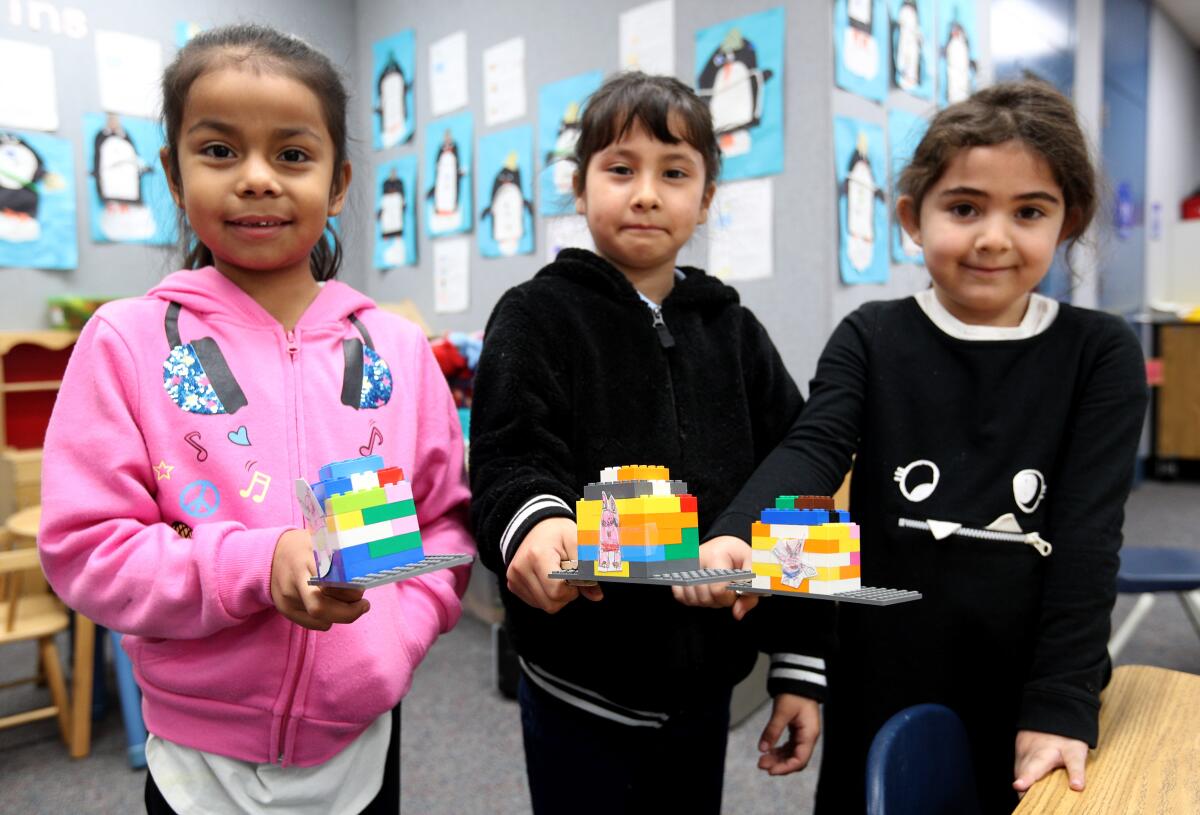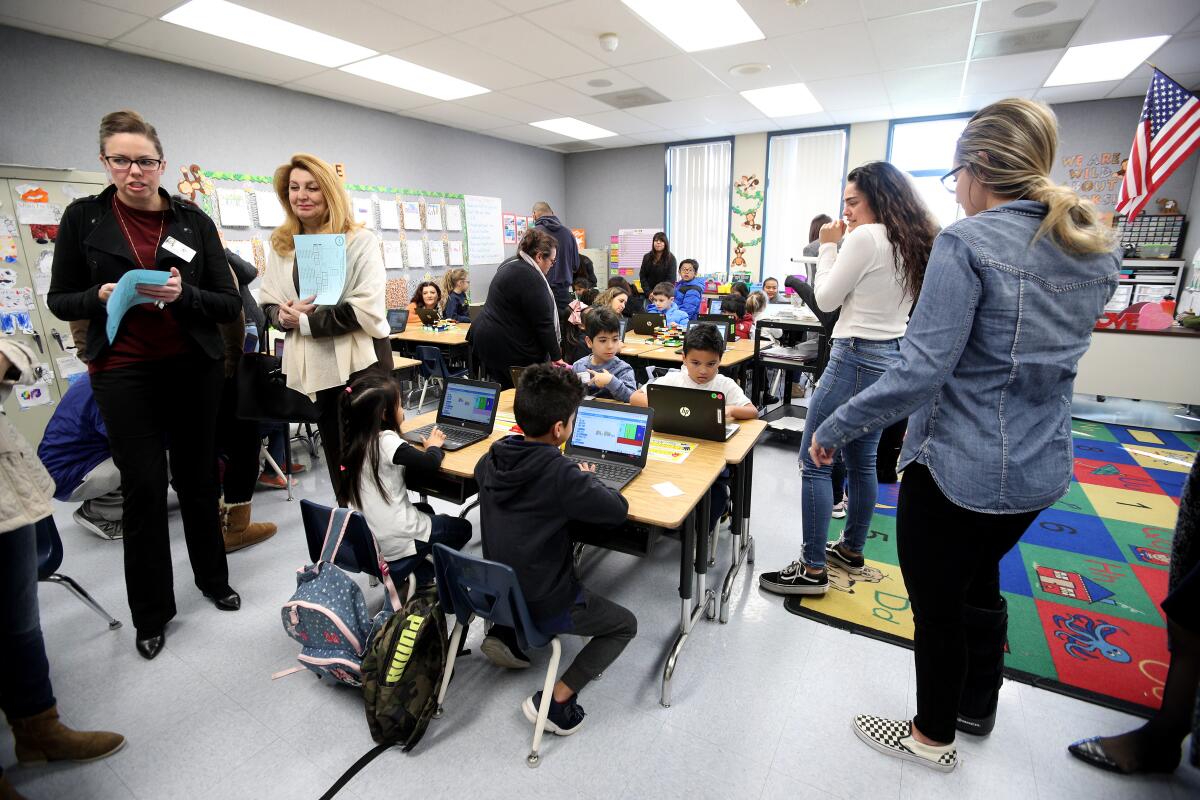Cerritos Elementary builds robots to travel through a mock-up of Glendale

- Share via
For the third consecutive year, Cerritos Elementary recently opened its doors for a showcase of students’ coding projects.
Parents and guardians were able to walk in and out of transitional kindergarten through sixth-grade classrooms to see how students are using computer science. Cerritos Principal Perla Chavez-Fritz estimates 300 guests attended the Feb. 6 event, which is about the same amount as last year.
“A lot of parents don’t understand coding, as most of us don’t, because we’re not doing it out there in the real world as a career,” said Chavez-Fritz. “It’s a great way for parents to understand really what coding is and for them to get to see the students practice.”
In Carla Reiber’s kindergarten class, 6-year-old Christian Barrios built an online version of his room and his dog Milo using Scratch, an online program to create your own animations, games and interactive stories. He also used Lego blocks to build a cityscape mock-up along with his classmates to show how coding works in real life.

Karineh Avanessian’s sixth-grade classroom works with Lego-branded robots. They used hardware and connected engines to assemble the robot. Then, students used computer software to code directions for the robot to move forward, rotate and stop. Their assignment was to navigate the robot through a city map.
“We want them to troubleshoot, test different theories and see which solution will be the best fit for the problem,” said Avanessian.
Her class chose Glendale and used a floor map with local places and stop signs. Eleven-year-old Noah Sanchez walked back and forth between the floor map and his desk to adjust the coding directions on his robot.
“I like how I program something and I don’t have to physically move it,” said Sanchez.
Avanessian added, “Through Code to the Future we not only teach students how to code but also connect it to subject areas in science, social studies, as well as English.”
Three years ago, the Glendale school board approved the campus’ transition into a computer-science magnet and the implementation of Code to the Future, a program providing training to help schools become immersed in computer-science education. Teachers learn programs to use in the classroom.
Chavez-Fritz said the funding comes from the district, including professional development. Every student in first through sixth grade has Chromebook laptops to use during their lessons. About five Chromebooks were placed in each kindergarten class.
When asked what differences she’s seen at the campus since the school became a magnet, Chavez-Fritz pointed to increased enrollment. When she was hired, Cerritos had a declining enrollment rate with nine empty classrooms. Part of it was because parents transferred to schools with a magnet program. The other part was families couldn’t afford Glendale’s rising living costs.
Out of the 452 students enrolled in Cerritos, 83.6% reside in low-income homes and are eligible for free and reduced-price lunches according to 2019 Dashboard results. However, Chavez-Fritz said enrollment has been steadily above 400 students.

“Now that we’re a magnet and this program has taken such great flight, our parents are no longer searching to leave Cerritos,” said Chavez-Fritz. She said she knows of parents who have moved out of the area but have sought permits so their children can still attend the campus.
Next year, Cerritos students will use Minecraft, a game-based learning platform, to build a world connected to one of their social studies concepts — ancient civilizations. Avanessian used the example of ancient Egypt, where they would code in order to create pyramids, the Nile River and farms on the video game.
